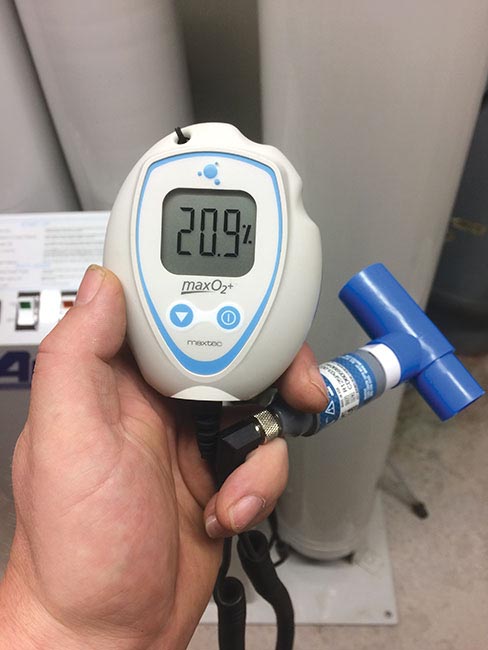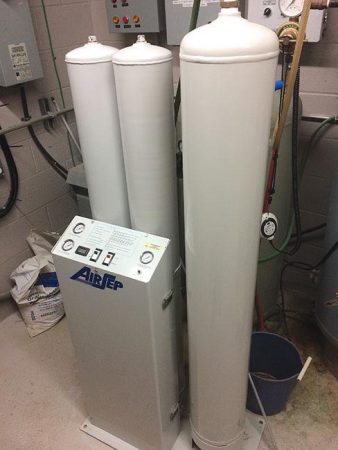
Features
News & Views
Opinion
Fish Health
Recirc
Technology
Don’t overlook oxygen purity
August 16, 2019 By Ron Hill
 Keys to properly assessing oxygen purity
Keys to properly assessing oxygen purity
An often overlooked and extremely important monitoring point for any oxygen system where oxygen is generated onsite is oxygen purity. If you generate your own oxygen, then oxygen purity is paramount. All the flow and pressure in your system is for nothing if the purity is low. Despite its importance, many hatcheries fail to monitor and alarm the oxygen purity at all.
Monitoring purity
Oxygen system pressure and oxygen purity are critical monitoring points that should appear on every checklist and be checked on each walkaround. Changes in these numbers are of the utmost importance to the farmer, and indicate real changes and potential problem occurring in the system.
The best monitoring system is real-time monitoring, with a probe wired to the main monitoring/control system that includes a low purity alarm and an automated backup feature. The size of a farm will determine how best to monitor purity, but every farm should have a handheld meter. A handheld purity probe is the essential tool for small farms but is useful for all farms in troubleshooting purity and checking the accuracy of real-time probes.
Always make sure to calibrate handheld purity meters before reading, as they are notorious for losing calibration. A good indication that your calibration is out is getting a reading at or over 100 per cent. Purity is not the same as per cent concentration which can exceed 100 per cent. Generated oxygen is not 100 per cent pure as there are still some trace gases present with the oxygen after the generation process. If you run multiple oxygen generators, make sure to have test ports at each generator so the purity output from each can be monitored and issues with one unit are not masked by monitoring system purity.

Oxygen pressure and purity are critical monitoring points that are often overlooked.
Troubleshooting
It is easy to miss the early warning signs with your oxygen generator if you do not monitor the purity. Without monitoring the oxygen purity, gradual purity losses caused by wear or failure can go unnoticed as technicians turn up oxygen at the tanks to compensate for the low oxygen caused by generator issues.
If these increases continue for days without anyone realizing the problem, a point of no return can be reached where the purity is 20.9 per cent, and the system is only pushing air into the fish units. The oxygen system pressure gauge may still be normal, further masking issues with purity.
Purity can only be revived by switching to backups. Turning off the generated oxygen to the system and allowing the receiver tanks to recover can revive the purity, unless the generator needs repair. If the generator is malfunctioning, backup/redundant systems will have to be maintained while the oxygen generator is repaired. Just determining you have purity problems is extremely problematic if there is no way to test.
A slow loss of purity over a series of days or weeks is a key warning sign. Valves and solenoids will wear out with regular use. Problems with the sieve, moisture or oil in the unit, will also show as a loss of purity as the sieve deteriorates.
Oxygen purity is also linked to the system pressure. If the oxygen system is overdrawn (where demand is higher than can be supplied), the loss of pressure is accompanied by a loss of purity – a key thing to check when troubleshooting. Reducing demand, plugging the leak or starting more oxygen generators should begin to raise the purity and pressure.
Monitoring is key when it comes to purity, and knowing is much better than not knowing. Do not be the farm that learns they need a purity meter after having an emergency or fish loss because the purity crashed and wasn’t ever monitored.
As with all things aquaculture, assume that your oxygen generator is going to fail and monitor the purity to make sure you recognize when that begins to happens.
Print this page
Advertisement
- Florida university gets funding boost for warm water finfish R&D
- INVE Aquaculture marks 35 years in industry





